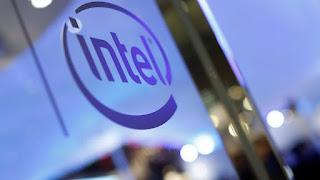Currently, the two largest chipmakers in the world are TSMC and Samsung. But Intel CEO Pat Gelsinger believes the company can overtake both by 2025.
Both TSMC and Samsung already have plans to build 2nm chips in the next few years. But currently they are still hampered in the production of 3nm chips, which is due to the complexity of the circuit production process using the 3nm process.
Intel did not directly state that they would be able to overtake the technology owned by TSMC and Samsung. But Gelsinger believes that Intel can still follow Moore's Law, or even get past it, he revealed in a recent online press conference.
This is quite an ambitious statement, considering that Intel is still far behind TSMC and Samsung in terms of manufacturing processor chips.
For information, Moore's Law was created by Gordon Moore, co-founder of Fairchild Semiconductor and Intel, who in 1965 stated that the number of components in integrated circuits would double every year, which in 1975 was changed to twice every two years.
"Moore's Law is still valid today. Today we predict that we will be able to maintain or even faster than Moore's Law in the next decade," explained Gelsinger.
If Gelsinger can prove this statement, then Intel will be able to overtake TSMC and Samsung. For information, Intel lags behind the two companies when it transitions from the 14nm to 10nm process, while both TSMC and Samsung can continue the development of the manufacturing process to date, which is 5nm.
Intel's strategy to achieve that target is to make processor chips that have multiple layers of silicon in one package. What Gelsinger believes can allow Intel to regain leadership in this realm.
"We hope to cross the line faster than twice as many transistors every two years," he concluded. This plan is promised to be launched in 2024 and targets to overtake TSMC and Samsung by 2025.
Moore's Law is actually more of a reflection of the miniaturization of the economy. That is by improving the production process, more circuits can be inserted into the chip, and making it more powerful and can generate income for use in the development of further innovations.
However, this calculation is no longer valid because research and development costs shot up too fast. Elements in the chip is already almost at the atomic scale, and power consumption problems limit the speed of the chip.
As a result, this law is currently used as a reference to show the performance and power consumption of a chip, as well as to measure the manufacturer's ability to increase the density of transistors on a chip.


